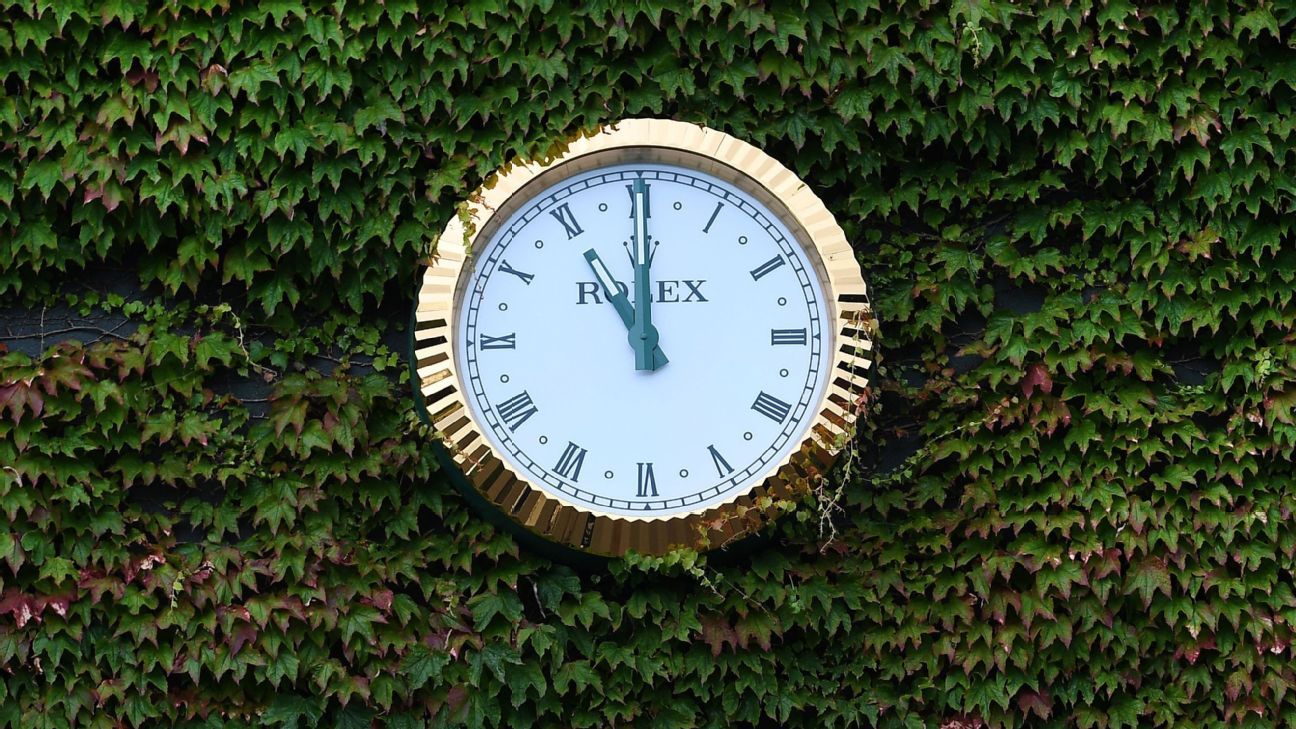Products You May Like
The Wimbledon curfew has already halted two matches this year. Although both postponements came at tantalizing moments in the match, an agreement made in 2009 meant tournament organizers had no choice but to suspend proceedings despite the packed stands and the momentum of the match. So what exactly is the Wimbledon curfew, and why does it exist?
What is the curfew?
In 2009, when Wimbledon unveiled the new roof on Centre Court, complete with spotlights, an agreement was made between the local officials, tournament organizers and local residents that play would not go on beyond 11 p.m. A statement released in 2018 detailed that transport considerations were also taken into account with the London Underground closing at approximately midnight on weekdays (it takes 15 minutes or so to walk to the nearest station from the All England Club).
Which matches have been affected by the curfew, and is there wiggle room?
This curfew is set in stone, but common sense does prevail. In 2012 Andy Murray held a 5-1 lead in the fourth with the cutoff point fast approaching, but tournament organizers allowed him to serve out to take a 7-5, 3-6, 7-5, 6-1 victory with the match stretching to 11:02 p.m. Despite breaching the curfew, the decision to allow play to continue was met with agreement by local council leader Stephen Alambritis who said: “We have always said these prearrangements were to be used with discretion, so I was pleased flexibility and common sense prevailed, because we have a duty to both the residents as well as the tennis.”
We’ve since seen two matches run afoul of the curfew before this year. The men’s semifinal in 2019, between Kevin Anderson and John Isner, went a remarkable 6 hours, 36 minutes. The mammoth match meant Novak Djokovic’s semifinal against Rafael Nadal did not begin until around 8 p.m. local time. Again, like Murray, they allowed the third set tiebreak to be completed with play finishing at 11:02 p.m., with the two players coming back to finish off the match a day later. In 2021, Nick Kyrgios had his first-round match with Ugo Humbert suspended in the fifth set at 3-3.
This year we’ve seen two matches halted by the curfew. The first was Murray’s second-round match with Stefanos Tsitsipas, where Murray led overnight, two sets to one, but ended up losing the match when it resumed the next day. Djokovic’s round-of-16 match with Hubert Hurkacz was halted at 10:35 p.m. with the 23-time Grand Slam champion leading two sets to none.
Why don’t they start play earlier?
This year, the tournament organizers have faced scrutiny for allowing play to start so late on Centre Court, putting matches in danger of hitting the curfew. In 2021, they decided to start play on Centre Court at 1:30 p.m., half an hour later than previous years, whereas Court No. 1 proceedings start at 1 p.m.
Some of this is in consideration of the spectators.
“That’s very much about ensuring that people have the opportunity to get on court, so as much as is possibly the case, we have full courts for when the players walk on,” All England Lawn Tennis Club CEO Sally Bolton said Monday. “When people buy a ticket to come to Wimbledon, they want to experience a day at the championships, and that involves going and seeing some play on outside courts, perhaps going to get something to eat, getting some strawberries and cream. We understand that our guests want that whole day.”
Another reason is to allow the grass as much of a chance as possible to recover — with added wear and tear from the removal of the middle-Sunday break.
Bolton added that the extended schedule suits broadcasters.
“As far as the TV audience is concerned, matches are happening at a time when they’re accessible to people,” Bolton said. “We’re seeing viewing figures that are beyond our expectations and beyond previous years, so I think they probably speak for themselves.”
